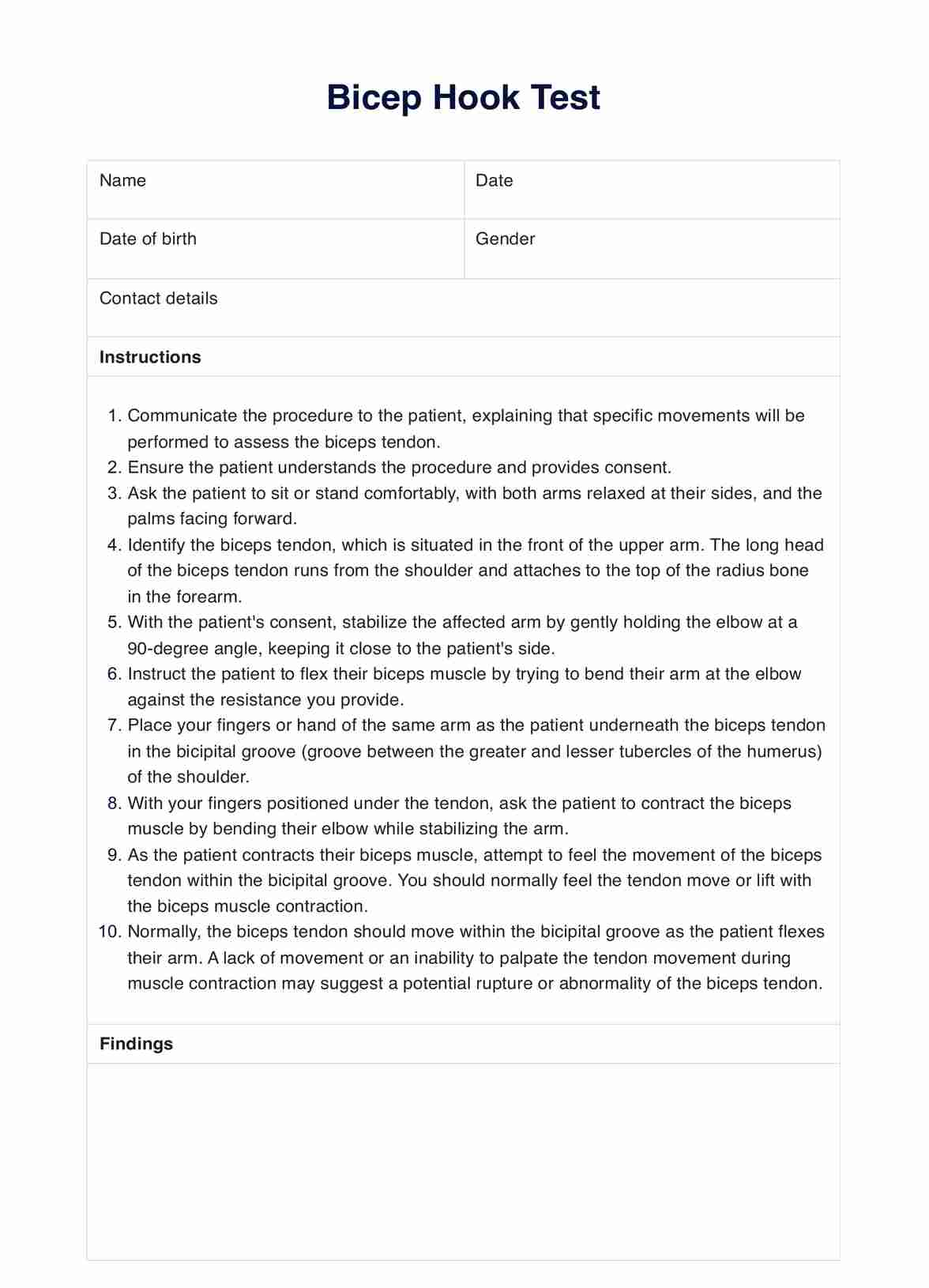The distal biceps hook test is commonly utilized by physicians to assess for a possible distal biceps tendon tear, as it is a reliable clinical maneuver employed in diagnosing injuries to the distal biceps.

Bicep Hook Test
Learn how to conduct the Bicep Hook Test for easy evaluation. Download a free PDF template and sample here.
Use Template
Bicep Hook Test Template
Commonly asked questions
The Bicep Hook Test is widely recognized as a reliable tool for diagnosing distal biceps tendon tears.
Yes, the Bicep Hook Test can be used postoperatively to assess the success of a bone joint surgery. If the tendon has been properly reattached, the practitioner should be able to hook onto it as if it were intact.
EHR and practice management software
Get started for free
*No credit card required
Free
$0/usd
Unlimited clients
Telehealth
1GB of storage
Client portal text
Automated billing and online payments











